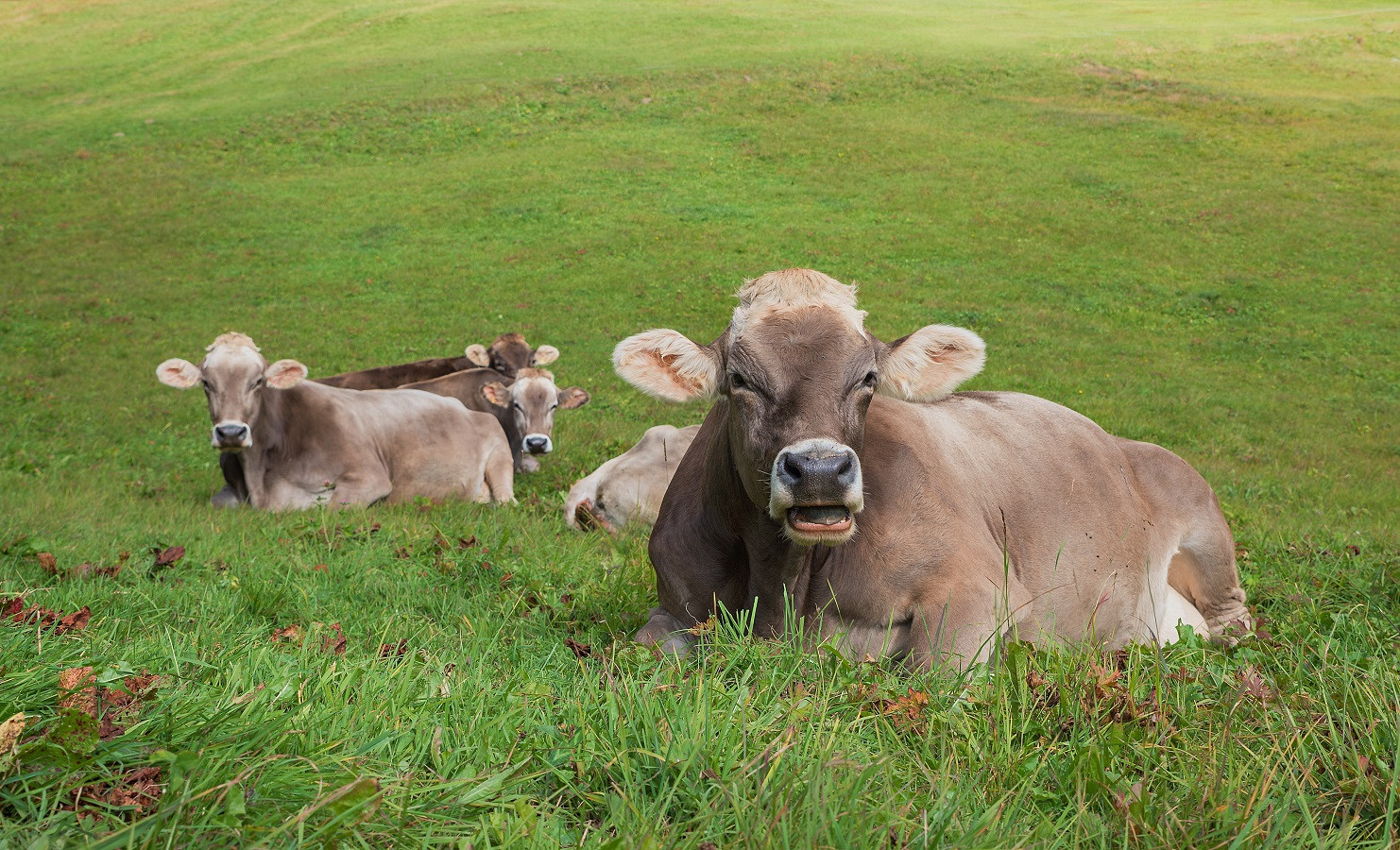Dairy Cow Breeds 101: Why We Went Brown Swiss & Jersey
posted on
August 9, 2025

Let’s talk cows. Not just any cows — milk cows. You know, the ladies who do the heavy lifting on the farm, the real queens of the pasture.
We’ve had a lot of people ask us, “Why Brown Swiss?” Or “Why not Holsteins like everyone else?”
Well, grab a mug of milk (preferably ice cold, full-fat & raw), and let’s dive into Dairy Cow Breeds 101…
Meet the Breeds
While there are plenty of dairy cow breeds out there — from Dexters to Guernseys and everything in between — for the sake of time (and the space on this page), we’re going to focus on the most common ones you’ll see in the dairy world and the ones we personally raise here at CT Ranch.
Let’s break it down:
Holstein
These are the black-and-white cows you see plastered on grocery store cartons and dairy ads. They’re massive, bred to produce one thing: milk. And lots of it.
We’re talking up to 10+ gallons a day. Sounds impressive, right? Well... not so fast.
Here’s the thing: Holsteins are like the bodybuilders of the dairy world. They’ve been selectively bred for extreme output — sometimes to the point of losing hardiness, personality, and long-term health. They often need heavy grain rations just to keep up, and frankly, we didn’t want to be in the business of maintaining a cow that’s more machine than mama.
Jersey
Now, these gals are sweethearts. Small in stature, but their milk is rich, creamy, and high in butterfat. Great for cheese, cream, and yes — dreamy cappuccinos.
We love Jerseys for their gentle nature and milk quality. They’re also more efficient on pasture and tend to thrive with less fuss.
Brown Swiss
These are the old souls of the dairy world. Big, hearty, calm, and strong — Brown Swiss cows have been around for centuries. Think of them as the gentle giants who take their time, chew their cud, and give sweet, protein-rich milk without all the drama.
They don’t put out the crazy-high volume like Holsteins, but what they do give is gold:
- More cream than Holsteins
- Higher protein levels for cheese making
- Often naturally A2/A2 milk producers
- Plus? They have strong hooves, good fertility, and they live longer
A2/A2 Milk — What’s That?
Let’s talk about A2 milk, because this is a biggie for us.
Milk contains protein — specifically beta-casein — and cows produce different types: A1 and A2. Most commercial dairy cows (like Holsteins) produce A1.
A2 milk, on the other hand, is easier on digestion for many people, especially those who think they’re lactose intolerant but really just don’t handle A1 protein well.
Our Brown Swiss and Jersey girls? Many of them produce A2/A2 milk naturally.
You can even test it — yep, from a hair off their tail! (We did. Haircuts for science.)
The A2 difference means:
- Fewer tummy troubles
- Easier for kids and sensitive folks
- Creamy, rich milk that’s as close to nature-made as it gets
Why We Chose What We Did
We didn’t want high-maintenance diva cows. We wanted sturdy, sweet, pasture-loving mamas that could:
- Thrive on grass (especially Texas!)
- Raise their own calves
- Produce rich, nourishing milk for our family and community
- Give us something wholesome without burning out
We also wanted cows that fit our lifestyle — shorter, hardier genetics, not bred for industrial barns but for homestead life. And we supplement as needed (especially in Texas heat!), but our goal is always sustainability and health — for the cows and the people drinking the milk.
So here’s the CT Ranch way:
We choose cows that make sense. For the land. For the milk. For the mission.
Because we’re not here to chase quantity.
We’re here to raise quality. From the cow to the cup.
And when you drink our milk, you’re not just getting nourishment — you’re tasting generations of wisdom in every drop.
Got a cow question? Curious about raw milk or A2 testing? Just hit reply — I love chatting dairy with anyone who’ll listen.



